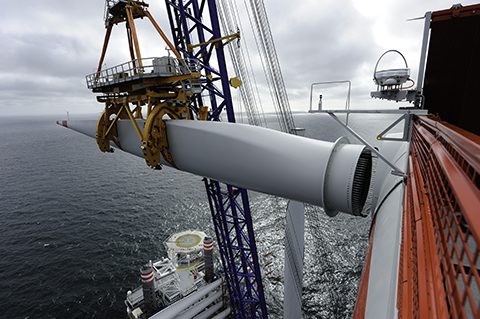
By Tony Millward, Vice President, Tender & Contracts, A2SEA
Tendering has been part of the offshore wind industry since its inception – and it’s crucial for arriving at an efficient and safe turbine installation plan. Yet still today, there are elements of the tender process that can be improved. So what makes for a good process?
For me, one of the most important aspects to tendering is simply this: Who’s at the table? At A2SEA, we always front with a full team comprising commercial, technical and legal advisors in all phases. This hasn’t been the norm on the other side of the table – but it may well be where things are headed in the future.
In years gone by, technical and project management representatives from the developer (and later, the procurement department) were the primary attendees, leaving many commercial and legal aspects to be dealt with in between meetings. While this approach generally worked, it perhaps hasn’t been the most efficient way to get the job done. And the more focused the perspectives of the representatives, the more time tended to be spent on specific contractual wordings, for example, rather than on identifying the best overall solution.
Here’s a case in point, which we hope will become more of the done thing in the industry: We’ve recently won the Horns Reef 3 tendering round, and the process was easily one of the best we’ve encountered. Almost every single meeting was attended not only by A2SEA’s tender team with its standard line-up of commercial, technical and legal representatives, but also by a mirrored team from the client’s side – in all phases. So, no matter what was discussed at each meeting, we had all the viewpoints and inputs right at hand. More questions could be answered, preliminary guesswork was removed, and the easier flow of information and perspectives turned what can, at times, be a stiffly formal meeting into more of a workshop, a meeting of minds about how the project might best be done.
The message is simple: With the right mix of procurement, technical and legal people on both sides of the table, the project can be properly understood, less time can be spent, and a better solution is likely to be reached. And in my estimation, despite what may appear to be a more costly setup with a higher headcount at each meeting, you’re more likely to have incorporated correct and workable texts into the contract when the day is done. And for us, that’s what it’s mainly about – both from our own and the client’s perspective. In fact, at times we have been able to help the client rewrite some of its requirements such that they became stronger and more workable for the project as a whole.
If you haven’t worked with our tender team before, you might find we can ask an irritating number of questions and get down into the details, but that’s because we’re focused on getting to something that is truly useful and crystal-clear for the project teams on both sides who, if all goes well, will have the task of delivering on the promises made.
Like this post? Subscribe now and get notified about new content!